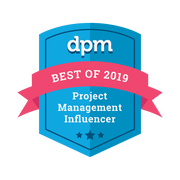To help you get your focus right during the initiation and planning phase, concentrate on answering the questions listed below. As you will see, the questions are focused on exploring and understanding what the scope of the project is and how to best go about delivering what the users want and need.
- What is the project intended to achieve?
- What are the motives for completing it?
- What business benefits will it lead to?
- Who will the beneficiaries be?
- What are the project’s success criteria?
- What are the project’s time, cost and quality constraints?
- Who are the main stakeholders?
- What is in scope and out of scope?
- What are the requirements?
- What is the proposed solution?
- Who and what is required in order to deliver the project?
- What risks, issues and dependencies surround the project?
- What is the project team likely to look like (size, roles, skill sets)?
- Who will be responsible for each aspect of the project?
- What is the likely duration of the project?
- How much is it likely to cost?
- What high-level phases is the project likely to go through?
- How will the project be executed and controlled?
- How will the products and outcomes be quality checked?
- How will the product be supported and maintained after handover?
- How will the project be governed?
- How will the project be closed down and handed over to the users and support teams?
In order to answer the above questions, you will likely need to spend weeks with the project’s main stakeholders and users. You may also be able to draw on a small project team who can start to prototype possible solutions.
Before you wrap up the initiation and planning phase, it’s important that you take the time to properly document your findings in a project initiation or definition document. Answer all the questions in writing and get the document signed off by the project’s sponsor prior to proceeding with the execution stages of the project. The project initiation or definition document will serve as the “contract” between you, as the project manager, and the steering committee stating what will be delivered, when, and for how much. It is unlikely that you will have a detailed plan to show at this stage, as the requirements will not have been analyzed in depth. So plan for what you can and outline the main phases, activities and target milestones.
The signed off project initiation or definition document is one of the most important outcomes of the initiation phase, along with a high level description of the requirements and a functional prototype or proof of concept of the proposed solution. And remember that the initiation and planning phase is also an ideal time to be building relationships and securing buy-in for the project. You need to engage the customer, users and senior executives as well as the team members.
Exercise: Initiating Your Last Project
Take some time to think about the last time you started a new project. Think about the things you did and whether it was a relatively formal or informal process. Did you formulate the business case, or was it written by someone else? How much time did you spend understanding the project’s scope and objectives? Who helped you analyze the requirements and initiate the project? Did you engage the main stakeholders right from the start? Did you carry out any prototyping during the initiation and planning phase and were you satisfied with the quality of the planning documents which were produced?
From that experience, what would you say your biggest lessons learned were? What worked well and what not so well?
If you had to do it again today, what would you do differently?
In the next blog we look at the specific steps you can take to effectively initiate and plan your project.
If you liked this post, you may also like:
10 Guidelines for Estimating Project Effort
Risk management is how adults manage projects!
8 Tips for Managing Project Costs
Top Tips for Gathering Requirements








 RSS Feed
RSS Feed